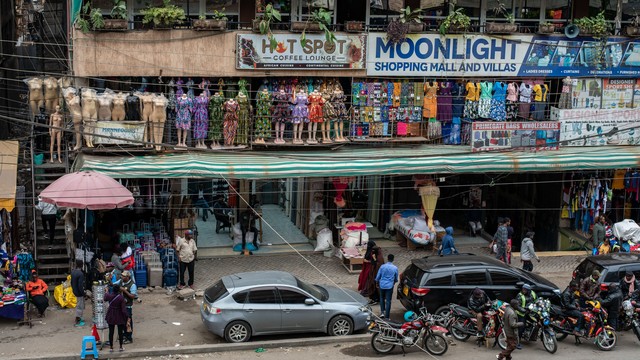Educating nomads
IIED temporarily hosted the design phase of the Education for Nomads programme between October 2009 and September 2010. This was while the institutional arrangements for its management were transferred from SOS Sahel UK to the Ministry of State for the Development of Northern Kenya and Other Arid Lands in Kenya.
The design phase consulted Kenyan pastoralists, knowledgeable educationists and literature to establish how best to get education to Kenya's isolated, scattered patoralists so they can compete on equal terms with other national population groups.
The programme aimed to help the Kenyan government remove the wide educational disparity between pastoralists and other Kenyans, to pilot innovative distance learning, and to remove the need for pastoral people to choose between education and herding.
In October 2010 the programme relocated to Nairobi to test a distance learning approach via radio in two northern districts in Kenya. It was hosted by Women Educational Researchers, Kenya (WERK), under the jurisdiction of the Ministry of State for the Development of Northern Kenya and Other Arid Lands (MDNKOAL).
What did IIED do?
During the design phase of the project, a number of publications were produced.
The 'Towards education for nomads: community perspectives in Kenya' booklet captured the voices and concerns of Kenyan pastoralists about education, and sharedtheir thoughts about the education system in Kenya and the ways in which it could adapt to better serve their needs.
The 'Mobile pastoralists and education: strategic options' report showed that successful education policy is possible, and that progress was being made – but only when both the practical and conceptual challenges of education for pastoralists were considered at the same time.
The 'Planning with uncertainty: using scenario planning with African pastoralists' booklet and DVD, produced by SOS Sahel UK and also available in French, illustrated how scenario planning could strengthen pastoralists' existing strategies to manage uncertainty and change. They described the process involved and discussed the benefits, challenges and implications of the approach, drawing on three experiences – two in Kenya and one in Niger.
There were two issues of a Education for Nomads Bulletin. Issue 1 presented the context and orientation of the programme's work and described the early steps in mapping relevant experiences and innovative approaches, while Issue 2 provided highlights of 12 months' work from the programme.
The 'Getting to the hardest-to-reach: a strategy to provide education to nomadic communities in Kenya through distance learning' report contained the project outline and strategy for the Education for Nomads programme, while an inter-ministerial workshop in Nakuru in January 2010 gathered experts to share knowledge and research findings to help design an education strategy for nomadic pastoralists.
A video was also produced titled 'Education for nomads: voices of the people. This can be viewed below and on IIED's YouTube channel, and featured the Borana, Somali, Gabra and Turkana communities sharing their opinions. It was commissioned by MDNKOAL.
Publications
Partners
Ministry of State for the Development of Northern Kenya and Other Arid Lands in Kenya










